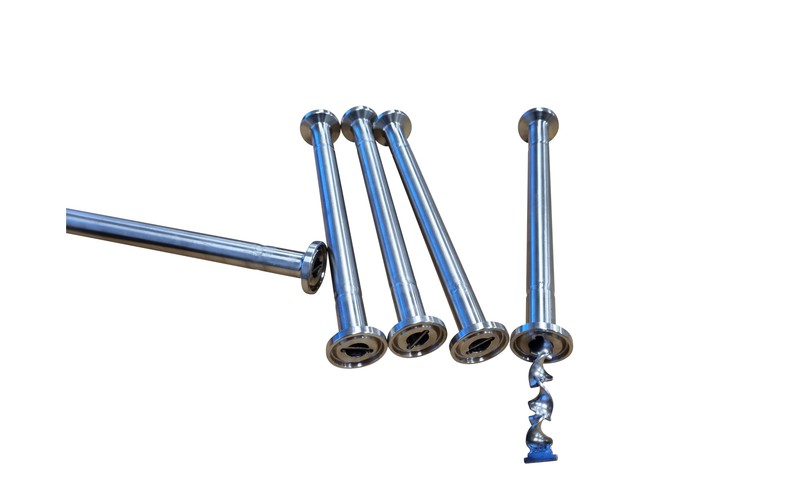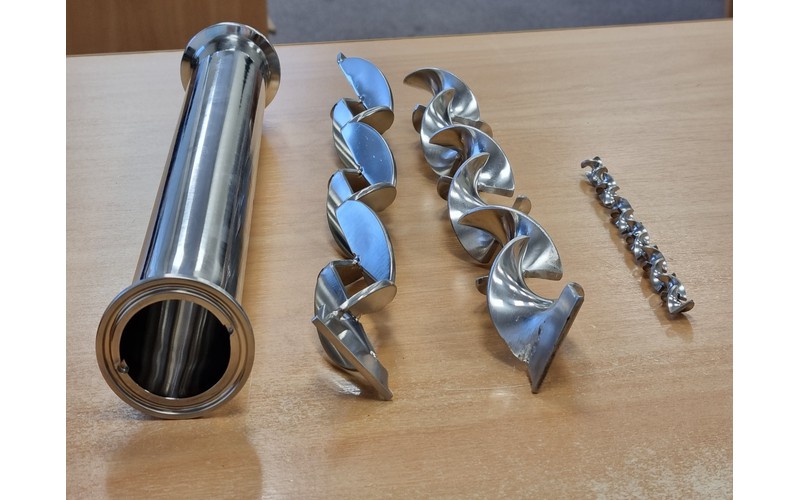Inline Static Mixers - Helical Elements
Helical element static mixers are useful for laminar flow conditions (ie lower flow velocities). We have designed these units to drop into the same flow tubes as our equivalent folded element mixers.
We manufacture Stainless Static Mixers in a range of sizes from ½ inch to 10 inches. These are off the shelf in stainless steel with triclover connections and are also made to order in various other materials and with other connections.
We calculate flow rate, pressure drop and mixing ability for your product duties and can recommend a suitable mixer for you.
HD Process stainless steel static mixer - inline - specifications and dimensions;
- With Triclamp (3A) connections (other connections available on request)
- Stainless steel food grade finish
- Available as flat folded (as standard) and helical folded (on request)
- Sizes available from 1” to 10”
- Any fold number and size made to specification
- Polished internals with removable mixing elements
- High-efficiency, low pressure-loss mixing
- Single direction mixing vortex ensures high shear
- ex stock as 3, 4, 6 fold and 1” to 4” tube sizes
WHY CHOOSE HELICAL MIXERS (as opposed to flat folded) -
Helical static mixers, with their twisted or spiral elements, are better suited for laminar flow and higher viscousity fluids, while flat-blade mixers, with their alternating blades, excel in turbulent flow regimes and promote radial mixing. Here's a more detailed comparison:
HELICAL STATIC MIXERS: Feature twisted or spiral elements that create a swirling motion within the fluid stream.
Flow: Effective for laminar flow regimes and viscous fluids, as they continuously divide and recombine the flow streams, promoting efficient mixing.
Applications: Suitable for mixing low-viscosity, turbulent and laminar flowing media.
Advantages: High mixing efficiency. Low pressure drop. Suitable for a wider range of applications.
Can be used for heat transfer enhancement.
Disadvantages:
May not be as efficient in turbulent flow.
May have flow distribution asymmetries which can reduce mixing performance




